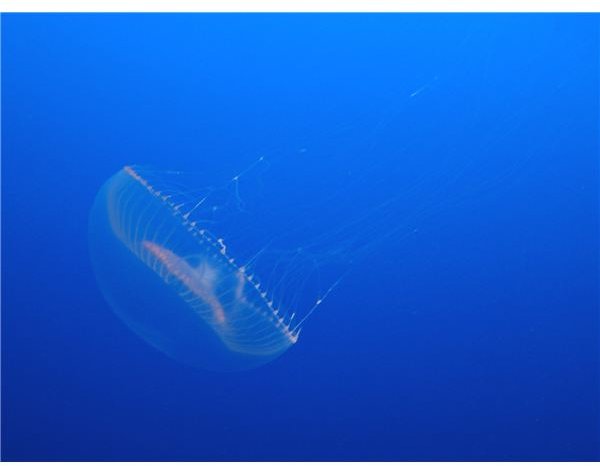Green Fluorescent Protein: What is the Purpose of Green Fluorescent Protein?
Green Fluorescent Protein (GFP)
Green Fluorescent Protein (GFP) is a protein that glows with a bright green fluorescence on exposure to blue light and ultraviolet light. GFP was first noticed in the North Pacific jellyfish Aequoria victoria; when the jellyfish became agitated, certain spots around its bell rim emitted a greenish glow.
GFP Research
Studies by the Japanese researcher Osamu Shimomura, in the 1960s, showed that the Aequoria victoria jellyfish contains a bioluminescent protein called Aequorin. This protein binds with calcium to emit blue light, and the blue light is then absorbed by Green Fluorescent Protein. The GRP converts the blue light to green light, making the jellyfish glow green. Researchers don’t yet know the purpose of Green Fluorescent Protein where jellyfish are concerned. Why, for instance, the color green? Does the color change at different ocean depths? Studying jellyfish in their natural habitat has so far proved difficult for various reasons.
In 1992, the U.S. biochemist Douglas Prasher discovered the GFP gene. His lab being low on research funds, he sent the gene samples to other scientists for further research. One of these, Martin Chalfie, found that insertion of GFP gene into bacteria made the bacteria glow green, a phenomenon that rather surprised everyone. The general assumption until then had been that the GFP would lose its fluorescence when introduced into other organisms; this assumption was based on another wrong assumption - that only special enzymes produced by the Aequoria victoria jellyfish could lead the GFP protein chain to fold in a specific way and form a light-emitting fluorophore or fluorescent chromophore.
The actual fact is that GFP does not require external enzymes. GFP is composed of 238 amino acids, and three of these - serine or threonine, tyrosine and glycine - are enfolded deep when the protein chain folds. These three amino acids react with each other, in the presence of oxygen, to form a fluorescent chromophore. The biochemist, Roger Tsien, discovered how GFP created its own fluorescent chromophore and the importance of oxygen in the process. Tsien experimented with different combinations of amino acids in different sections of the protein chain and managed to produce more vivid and different colored GFP.
Martin Chalfie, in the meantime, had come up with the concept of using the green glowing property of GFP as a genetic marker in cellular and molecular research. His idea was to attach the GFP gene to a gene of interest so that when it expressed the resulting protein would contain GFP; researchers could then shine an ultraviolet light and learn about gene expression by following the path of the green glow. Chalfie was able to try out his concept successfully on the hermaphrodite C. elegans worm.
For their role in the discovery and development of Green Fluorescent Protein, Shimomura, Chalfie and Tsien were awarded the Nobel Prize in Chemistry in 2008.
The Purpose of Green Fluorescent Protein (GFP)
Humans have found so many uses for GFP, it would astound a jellyfish. Some of these are -
- GFP is used, as already mentioned, as a fluorescent genetic tag in cellular and molecular research. Researchers now use different colored GFPs to study different processes simultaneously.
- GFP is used to create fluorescent animals for scientific and medical research as well as the pet industry. Scientists have created fluorescent monkeys, rabbits, mice, fish, frogs, pigs, flies, worms, bacteria, yeast, etc. They have also created fluorescent plants. The ethics of creating such fluorescent animals and plants is still being debated.
- GFP is used in biosensors.
Resources
https://www.ncbi.nlm.nih.gov/pubmed/9759496
https://www.rcsb.org/pdb/static.do?p=education_discussion/molecule_of_the_month/pdb42_1.html
https://www.sciencedaily.com/releases/2009/05/090527215547.htm
